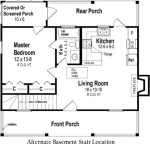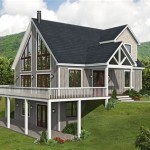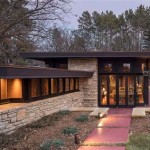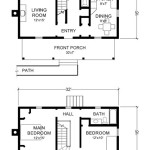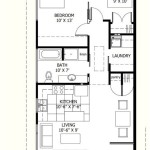Floor Plan of a Victorian House: A Detailed Exploration
Victorian houses, built during the reign of Queen Victoria (1837-1901), are characterized by their ornate details, intricate designs, and a distinctive approach to spatial planning. The floor plan of a Victorian house reflects the social norms, technological advancements, and aesthetic preferences of the era. Understanding these plans provides insights into the lifestyles of the Victorian upper and middle classes, as well as the architectural innovations that shaped residential living during the 19th century.
Victorian architecture encompassed several styles, including Gothic Revival, Italianate, Second Empire, Queen Anne, and Stick-Eastlake. Each style exhibited variations in ornamentation and facade design, but common threads ran through their interior layouts. Factors like social hierarchy, the growing servant class, and new heating and plumbing technologies influenced how space was allocated and utilized within the home. This article will explore the typical floor plan elements of a Victorian house, highlighting key features and discussing the reasons behind their prevalence.
Key Point 1: Common Elements of a Victorian House Floor Plan
The most frequently observed components of a Victorian house floor plan include a distinct separation of public and private spaces, a formal parlor, a dining room, a kitchen relegated to the back of the house, multiple bedrooms, and accommodations for servants. These elements collectively shaped the daily lives of the occupants and reflect the social stratification of the time. Further delving into each component clarifies the rationale behind their design and placement.
The entrance hall served as a transitional zone between the outside world and the inner sanctum of the home. It was often a grand space, showcasing the family's wealth and status. Features like intricate tilework, a sweeping staircase, and elaborate woodwork were common. From the entrance hall, guests would be ushered into the formal parlor, while family members would typically access other parts of the house.
The parlor was the most formal room in the house, reserved for entertaining guests and displaying prized possessions. It was meticulously decorated, often featuring plush furniture, ornate wallpaper, and numerous decorative objects. This room was strictly for social occasions and was kept separate from the more functional areas of the house. The size and opulence of the parlor reflected the family's social standing.
The dining room was another important space for entertaining, though it was generally less formal than the parlor. It was typically located near the kitchen for convenient serving. Large families and frequent dinner parties necessitated a spacious dining room with a large dining table. The decor was often rich and sophisticated, reflecting the importance of formal dining in Victorian society.
Victorian kitchens were often situated at the back of the house, away from the main living areas. This arrangement was intended to minimize the noise and odors associated with cooking and food preparation. Kitchens were primarily functional spaces, equipped with a stove, a sink, and ample storage. While advancements in cooking technology were emerging, kitchens still relied heavily on manual labor, often performed by servants.
Bedrooms were typically located on the upper floors of the house, providing privacy and quiet for family members. Victorian houses often had multiple bedrooms, reflecting the larger family sizes of the era. Each bedroom was individually decorated, though a degree of consistency in style was maintained throughout the house. The master bedroom was usually the largest and most elaborately furnished.
Servant quarters were an integral part of Victorian house floor plans, reflecting the prevalence of domestic staff in middle and upper-class households. These quarters were typically located in the attic, basement, or in a separate wing of the house. Servant quarters were often small and sparsely furnished, reflecting the lower social status of domestic staff. The separation of servant quarters from the main living areas reinforced the social hierarchy within the household.
Key Point 2: Influence of Technology and Social Norms
Advancements in heating, plumbing, and lighting technologies significantly impacted Victorian house floor plans. Central heating systems, for example, allowed for larger, more open spaces, as rooms no longer needed to be clustered around fireplaces. Indoor plumbing led to the introduction of bathrooms and water closets within the house, requiring dedicated plumbing infrastructure. Gas lighting replaced candles, providing brighter and more efficient illumination.
Social norms also played a crucial role in shaping Victorian house floor plans. The emphasis on privacy and propriety led to the separation of public and private spaces. The formal parlor served as a buffer between the family and the outside world, allowing them to control their interactions with visitors. The relegation of the kitchen to the back of the house reflected the desire to conceal the messiness of domestic labor from guests.
The placement of the staircase was also strategically important. A grand staircase in the entrance hall served as a focal point, showcasing the family's wealth and status. However, a separate staircase for servants was often included, allowing them to move between floors without disturbing the family. This segregation reflected the social hierarchy within the household.
The arrangement of rooms also reflected the Victorian emphasis on gender roles. The parlor and dining room were primarily used by women for social gatherings, while the library or study was typically reserved for men. This segregation of spaces reinforced the traditional division of labor between men and women.
The introduction of hallways and corridors was also a significant development in Victorian floor planning. These spaces provided circulation routes between rooms, offering greater privacy and flexibility. Hallways allowed family members and servants to move around the house without disturbing activities in other rooms.
Key Point 3: Variations and Regional Differences
While there were common elements in Victorian house floor plans, variations existed depending on the specific architectural style, the location of the house, and the wealth of the homeowner. For example, Italianate houses often featured symmetrical layouts and prominent towers, while Queen Anne houses were characterized by asymmetrical facades and intricate ornamentation. Regional variations also influenced floor plan design, with houses in urban areas often being smaller and more compact than those in rural areas.
The size of the house also played a significant role in determining the layout. Smaller Victorian houses might have a single parlor, while larger houses could have multiple parlors, a library, and a separate music room. The number of bedrooms and servant quarters also varied depending on the size of the family and the number of domestic staff employed.
The use of materials also varied depending on the location and the wealth of the homeowner. Brick and stone were common building materials in urban areas, while wood was more prevalent in rural areas. Interior finishes also varied, with wealthier homeowners opting for more expensive materials like marble, mahogany, and silk.
Adaptations to existing structures also influenced Victorian house floor plans. Many Victorian houses were built on the foundations of older buildings, requiring architects to adapt their designs to the existing footprint. This often resulted in unusual layouts and asymmetrical room arrangements.
Modern renovations and alterations have further transformed Victorian house floor plans. Many homeowners have opened up spaces, modernized kitchens and bathrooms, and converted servant quarters into additional living areas. These renovations often prioritize functionality and convenience over historical accuracy.
Understanding the floor plan of a Victorian house provides valuable insights into the social, technological, and aesthetic values of the Victorian era. These homes reflect the complex interplay of factors that shaped residential living during the 19th century. By studying these plans, one can gain a deeper appreciation for the architectural legacy of the Victorian period.

Luxury 2 Story Victorian Style House Plan 3357
Victorian House Plans Home Design Gml D 756 19255

58 Best Victorian Floor Plans Ideas House Vintage

House Plan 3225 Victoria

Pin By Chriss Flagg On Architecture Victorian House Plans Mansion Floor Plan

Victorian Style House Plan 4 Beds 5 Baths 5250 Sq Ft 132 255 Dreamhomesource Com

House Plan 48190 Victorian Style With 874 Sq Ft 2 Bed 1 Bath

Plan 054h 0008 The House

Victorian Style House Plan 4 Beds 5 Baths 5250 Sq Ft 132 255

1891 Prints Cottage Architectural Design Floor Plans Victorian Home Hopkins Mab1


